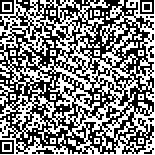| 摘要: |
| [摘要] 目的 探讨血清嗜酸性粒细胞趋化因子(Eot)、人β-防御素-1(hBD-1)对活动性肺结核(ATB)的鉴别诊断价值,并分析二者与临床疗效的关系。方法 选取2020年3月至2022年10月攀枝花市中心医院收治的162例ATB患者(ATB组),另选取同期81名体检健康者(健康组)及81例潜伏结核感染(LTBI)者(LTBI组),检测并比较三组血清Eot、hBD-1水平,采用受试者工作特征(ROC)曲线分析其对LTBI与ATB的鉴别诊断价值。ATB组患者均予2HRZE/4HR方案治疗,根据疗效分为有效组与无效组,比较两组血清Eot、hBD-1水平。采用多因素logistic回归分析影响ATB患者疗效的危险因素。采用ROC曲线分析血清Eot、hBD-1对疗效的预测价值。结果 ATB组、LTBI组血清Eot水平高于健康组,hBD-1水平低于健康组,差异均有统计学意义(P<0.05)。ATB组血清Eot水平高于LTBI组,hBD-1水平低于LTBI组,差异均有统计学意义(P<0.05)。ROC曲线分析结果显示,血清Eot、hBD-1水平均具有鉴别诊断LTBI与ATB的价值(P<0.05),且两指标联合的鉴别诊断效能更优[AUC(95%CI)=0.834(0.696~0.969),P<0.001],灵敏度和特异度分别为83.33%、82.72%。162例ATB患者治疗有效率为76.54%(124/162),治疗无效率为23.46%(38/162)。无效组有吸烟史、合并空洞及Eot水平均显著高于有效组(P<0.05),hBD-1水平显著低于有效组(P<0.05)。多因素logistic回归分析结果显示,有吸烟史、合并空洞、较高的Eot水平及较低的hBD-1水平是ATB治疗无效的独立危险因素(P<0.05)。ROC曲线分析结果显示,血清Eot、hBD-1水平均能有效预测ATB患者的疗效(P<0.05),且两指标联合的预测效能更优[AUC(95%CI)=0.842(0.720~0.940),P<0.001],灵敏度和特异度分别为81.58%、82.26%。结论 ATB患者血清Eot水平升高、hBD-1水平下降有助于鉴别LTBI与ATB,且较高的Eot水平、较低的hBD-1水平是ATB患者治疗无效的独立危险因素,血清Eot、hBD-1联合检测对于预测ATB患者疗效具有较高的参考价值。 |
| 关键词: 活动性肺结核 嗜酸性粒细胞趋化因子 人β-防御素-1 诊断 疗效 |
| DOI:10.3969/j.issn.1674-3806.2024.01.10 |
| 分类号:R 52 |
| 基金项目:四川省医学科研课题(编号:S2020371) |
|
| A study on the value of serum eotaxin and human β-defensin-1 in the differential diagnosis of active pulmonary tuberculosis and their relationship with clinical efficacy |
|
QIU Guoyuan1, FENG Jing1, GONG Chengli1, DAI Shiqiong2, LENG Wenhua3, YANG Wenjuan1
|
|
1.Department of Clinical Laboratory, Panzhihua Central Hospital, Sichuan 617000, China; 2.Department of General Medicine, Panzhihua Central Hospital, Sichuan 617000, China; 3.Department of Respiratory and Critical Care Medicine, Panzhihua Central Hospital, Sichuan 617000, China
|
| Abstract: |
| [Abstract] Objective To explore the value of serum eotaxin(Eot) and human β-defensin-1(hBD-1) in the differential diagnosis of active pulmonary tuberculosis(ATB), and to analyze the relationship between them and clinical efficacy. Methods A total of 162 ATB patients admitted to Panzhihua Central Hospital from March 2020 to October 2022 were selected(ATB group), and 81 healthy individuals undergoing physical examination(healthy group) and 81 patients with latent tuberculosis infection(LTBI group) were selected during the same period. Serum Eot and hBD-1 levels were detected and compared among the three groups. Receiver operating characteristic(ROC) curve was used to analyze their differential diagnostic value for LTBI and ATB. All the patients in the ATB group were treated with 2HRZE/4HR regimen, and these patients were divided into effective group and ineffective group according to their clinical efficacy, and the serum Eot and hBD-1 levels were compared between the two groups. The risk factors affecting the efficacy of the ATB patients were analyzed using multivariate logistic regression analysis. The predictive value of serum Eot and hBD-1 for efficacy were analyzed using ROC curve. Results The levels of serum Eot in the ATB group and the LTBI group were higher than those in the healthy group, and the levels of serum hBD-1 in the ATB group and the LTBI group were lower than those in the healthy group, and the differences were significant(P<0.05). The levels of serum Eot in the ATB group were higher than those in the LTBI group, and the levels of serum hBD-1 in the ATB group were lower than those in the LTBI group, and the differences were significant(P<0.05). The results of ROC curve analysis showed that the levels of serum Eot and hBD-1 had the differential diagnostic value for LTBI and ATB(P<0.05), and the combination of the two indicators had better differential diagnostic efficacy[AUC(95%CI)=0.834(0.696-0.969), P<0.001], with sensitivity and specificity being 83.33% and 82.72%, respectively. In the 162 patients with ATB, the effective rate was 76.54%(124/162) and the ineffective rate was 23.46%(38/162). Smoking history, tuberculosis complicated with tuberculous cavity and the levels of Eot in the ineffective group were significantly higher than those in the effective group(P<0.05), and the levels of hBD-1 in the ineffective group were significantly lower than those in the effective group(P<0.05). The results of multivariate logistic regression analysis showed that smoking history, tuberculosis complicated with tuberculous cavity, higher level of Eot and lower level of hBD-1 were independent risk factors for ineffective treatment of ATB(P<0.05). The results of ROC curve analysis showed that both serum Eot and hBD-1 levels could effectively predict the efficacy of the ATB patients(P<0.05), and the combined predictive efficacy of the two indicators was better[AUC(95%CI)=0.842(0.720-0.940), P<0.001], with sensitivity and specificity being 81.58% and 82.26%, respectively. Conclusion Increased serum Eot levels and decreased hBD-1 levels in ATB patients are helpful to distinguish LTBI from ATB, and higher Eot levels and lower hBD-1 levels are independent risk factors for ineffective treatment in the ATB patients. The combined detection of serum Eot and hBD-1 has a higher reference value in predicting the efficacy of the ATB patients. |
| Key words: Active pulmonary tuberculosis Eotaxin Human β-defensin-1 Diagnosis Efficacy |

